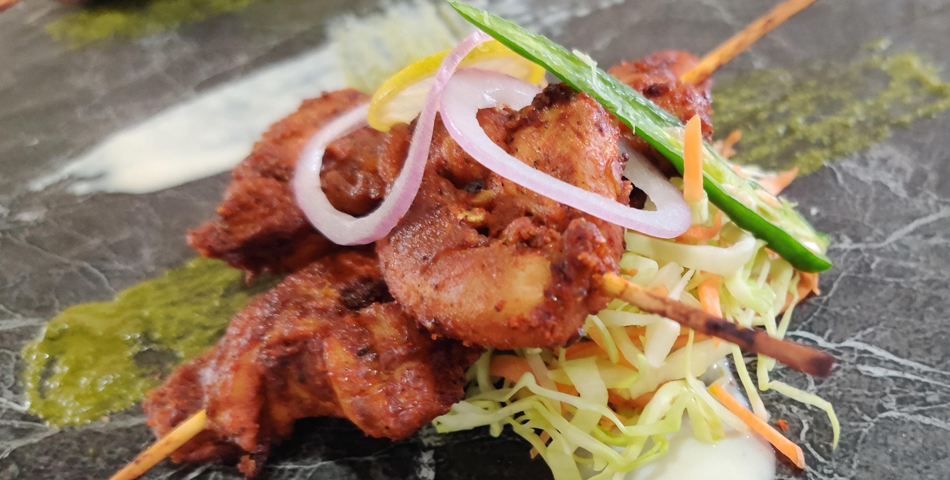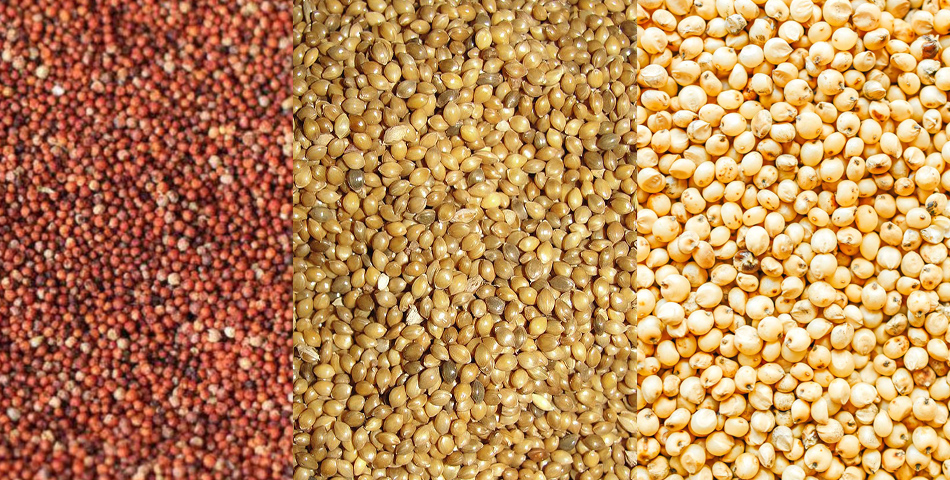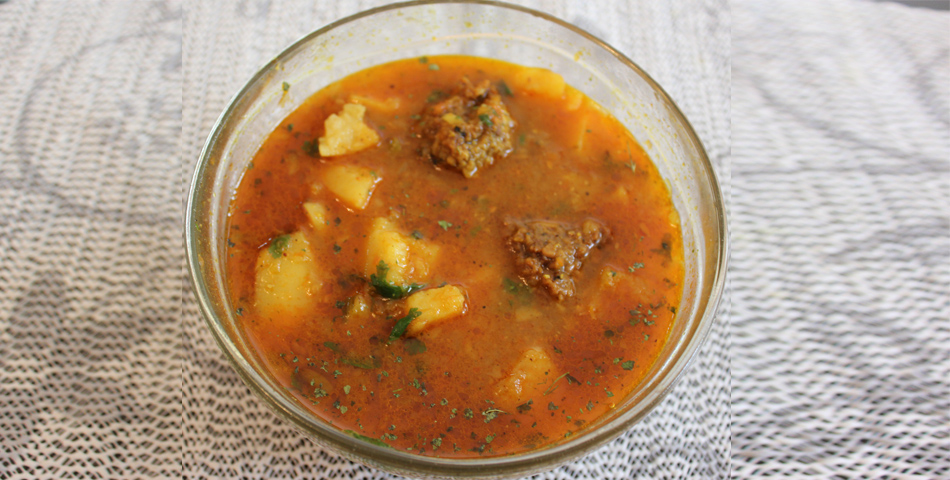
There is never a dull moment on the streets of Mumbai no matter what the time of the day, month, or year. But of late, the streets have been even more frenzied as the city prepares for the arrival of its beloved God, Lord Ganesha. And soon after Lord Ganesha leaves for his home, there would be Navratri, Durga Puja, the city celebrates it all. This frenzied energy took me back to the streets of Ahmedabad via the lanes of memory. A similar frenzy used to ensue on the relatively calmer lanes and alleys of the commercial capital of Gujarat as the city used to gear up for the festival that celebrates Goddess Durga in her 9 forms over 9 nights. And all these sights and memories of festivals also brought back memories of something that is synonymous with the celebrations - the food! The sumptuous aromas and images of the special fasting food that used to be prepared in our home during Navratri as my grandfather used to observe a fast for 9 days came flooding back.
'Vrat' or fasting is a word that is commonplace in India. Almost every one of us has fasted, willingly or even without knowing it (remember those special meals of sabudana khichdi and kuttu samosa that our moms and grand moms used to make?) at some point of our lives. But, how did fasting originate?
Fasting, the act of voluntary, temporary, and sometimes complete abstinence from food that is regularly eaten is a practice that has been going on in various forms ever since the times of the primitive man in various forms such as, initiation ceremonies, coming of age rituals, and the like. The primitive civilizations imposed dietary restrictions primarily for health and purification purposes, but sometimes, the reasons were also spiritually inclined rituals that required the primitives to fast for long durations. On some occasions, they also fasted to express gratitude to the spirits of earth for the food and other rewards that they showered upon them.
Fasting rituals in modern religions are believed to have originated from these ancient practices of fasting. Hinduism, Islam, Christianity, Buddhism, and all other major religions of the world, except Zoroastrianism which prohibits it, prescribe fasting in various forms and associate it with penance, sacrifice, purification, spiritual gain, and mourning.
Even when we browse through the pages of history, we find that many great minds have spoken highly about fasting and led by example. Right from the Greek mathematician Pythagoras; to Parcelsus, the father of Western Medicine; to the Father of India, Mahatma Gandhi; all had heaped rich praise on fasting and practiced it in their daily lives.
One thing that is constant among all the various kinds of fasting rituals is that there is no uniform rule. There are various kinds of fasts that are different in the duration, the food items that one abstains from, and whether staying away from water is also included in the fasting or not. While abstinence is the general rule, what one needs to abstain from depends on the religion, rituals, the region where the fast is observed, the time of the year, and many similar factors.
Among the types of fasts that are practiced, one of the most common ones is 'fal-ahar', or a fruit diet, where regularly eaten flours and other 'cultivated' food items are replaced with seasonally available fruits, thereby helping the body detoxify, but still give it the required amount of calories in the form easily digestible fruits. This has been practiced ever since the time of the primitives, and is common during the fasts observed in the monsoons where there is a large variety of fruits available. Then there is 'jal-ahar', or a water diet, the type of fasting which is generally observed in the summer months where only liquids are consumed to ensure that the body stays hydrated while it detoxifies.
One common feature in most fasts is that non-vegetarian food is not consumed. Apart from the religious beliefs, the amount of energy that the body needs to spend in digesting the meats is one of the main reasons for them to be kept out of the diet followed during a fast. Even salts, apart from rock salt, are not eaten during the fasts to reduce the sodium levels in the body, thereby reducing the water retention in the body, and thus, helping it detoxify.
Yet another thing interesting thing is that like the Navratri fasting, many of the fasts are observed during times when seasons are changing. During these fasts, grains like wheat and rice, and spices like red chilli, mustard seeds and asafetida that are kept out of the diet while one is fasting are backed by the fact that keeping these food items out of the diet helps the body rejuvenate in times when the immune system is coping with the onslaught of the diseases due to the change in the seasons.
When one observes these practices more minutely, it becomes clear that fasting does not always mean starving your body. There are a lot of scientifically sound reasons that are the foundations of these fasts, and modern medicine has come to recognize that based on many studies that have been conducted to examine the benefits of fasting. The link between the spiritual and physical well being and fasting being one of the means to achieve that is now widely accepted even in the western civilizations.
It has also been scientifically proven that intermittent fasting helps in taking the blood pressure, cholesterol levels, and even the insulin numbers in the body to healthier levels. Along with all these benefits, using up of the fat reserves in the body also helps in weight loss, thereby keeping lifestyle diseases at bay, and improving general physical as well as mental well-being.
These scientifically proven benefits have led to an increase in the amount of food items that one can consume during fasts. Apart from the wide variety of fruits that are available in India, one can opt for substitutes. Foods like water chestnut (singhade), buckwheat (kuttu), barnyard millet (samvat ke chawal), and the latest super food amaranth (rajgira) can be used as replacements for wheat and rice, and flours made from them can make breads and rotis that are similar in texture, but are very healthy to eat. These flours can also be used to make curries and porridges loaded with nutrients while acting as a thickening agent. Then, there are the commonly used fasting food items like tapioca pearls (sabudana), potatoes, cucumbers, nuts, and similar food items that are easy to digest, and help in giving an instant burst of energy to the body while one is fasting.
All these gamut of ingredients are now easily available in the stores, and have lead to development of many interesting recipes that can be eaten during the fasts. Right from samvat ke chawal ka pulao, which is a pulao made using barnyard millet, potatoes, and rock salt, while avoiding spices; to a kela kebab, which are kebabs made using banana as the core ingredient; and everything in between, experimenting and coming up with interesting combinations of these fasting foods is what everyone seems to be doing these days! Interestingly, the increase in the variety of sumptuous food items that one can make and consume during fasts has become so large that now one ends up eating more during a fast than one would on a non-fasting day owing to the novelty that these special food items have!
But then there are a few things that one needs to be careful about. If such flours made from foods that are eaten during fasts are mixed with cheaper options, it will defeat the scientific as well as religious purposes of fasting. Yet another point of concern is that, since these flours are slow-moving stock, the probability of them getting infested with pests in the stores is higher than the regular flours. To avoid all these problems, it needs to be ensured that the ingredients are bought from reliable sources. It is also recommended that the stocking-up of these fasting foods is done well in advance to avoid any last minute surprises due to their non-availability in the reputed stores. And since even at home, these flours would be consumed only during the fasts, the use of air-tight containers to store them will help in keeping the moisture and the pests out.
On that note, I'm off to eat some special fasting food items that are made every year in our home during the month of Shravan and eaten cold on the next day when no cooking is done in the kitchen in a ritual called 'thadli', which means 'cold food day'. The ritual aims at giving rest to the body from the daily, physical rigours of cooking, as well reducing the food intake and giving rest to the digestive system. Don't you think that it's time to try and join your parents and grandparents in one of these fasts?




Be the first one to post a comment